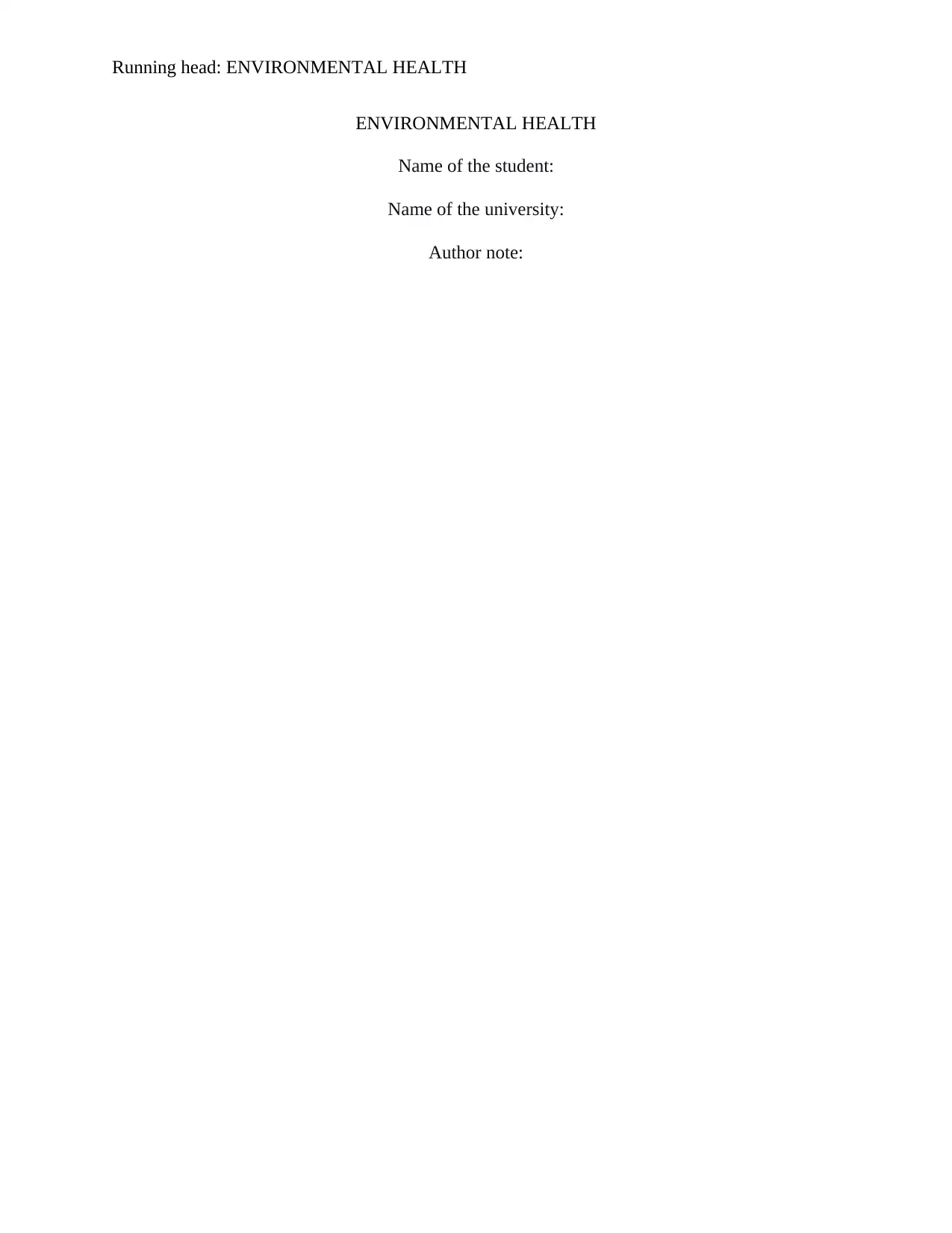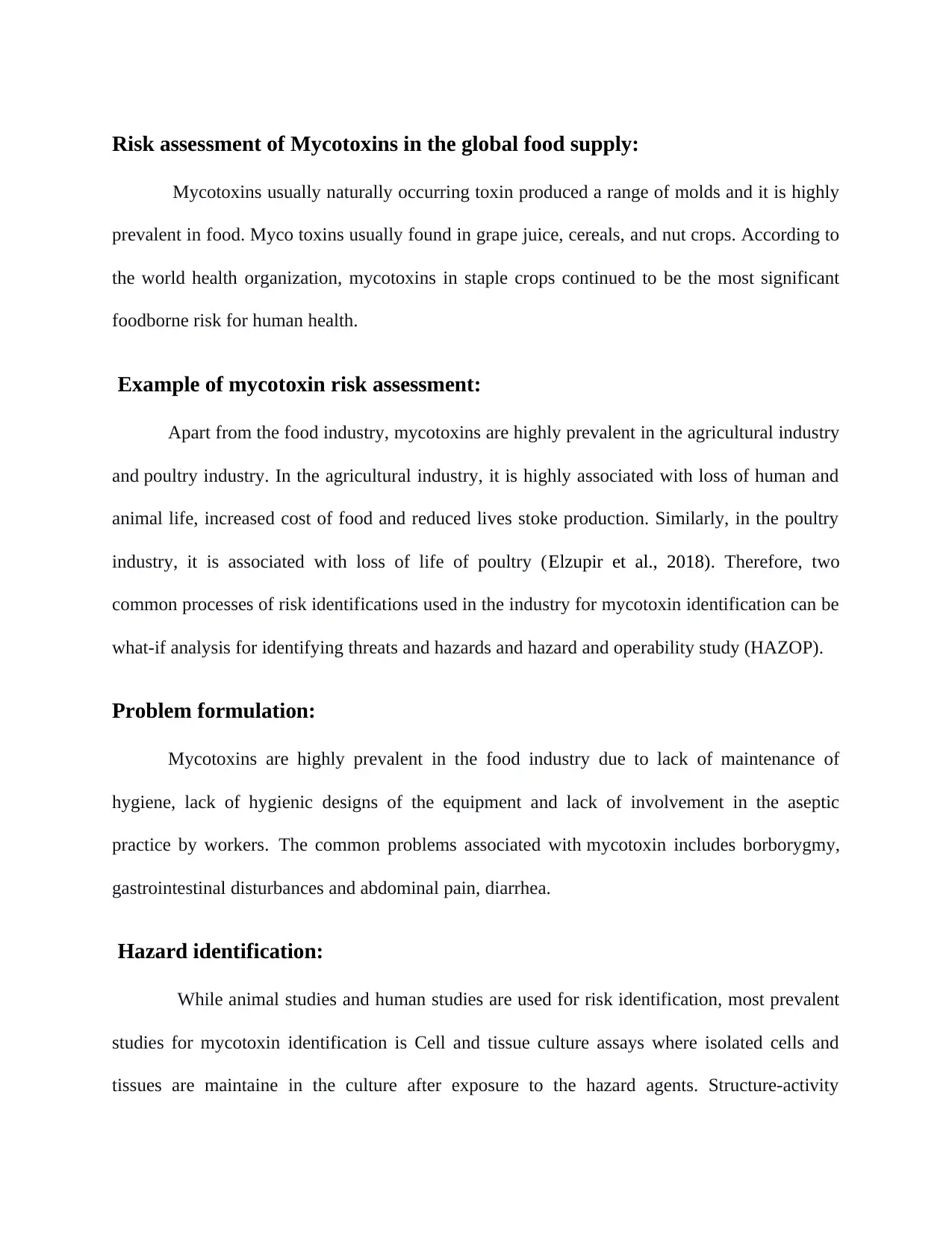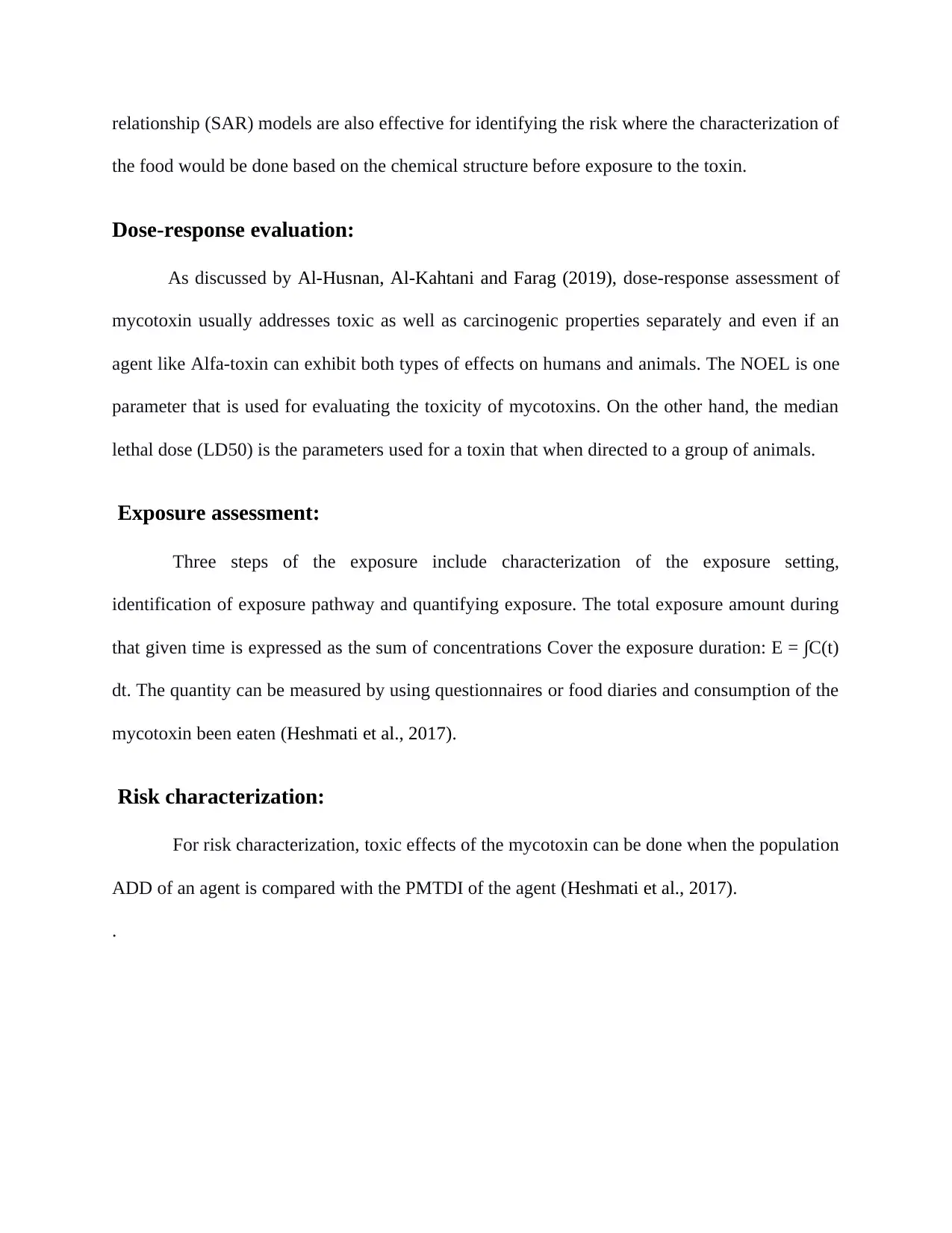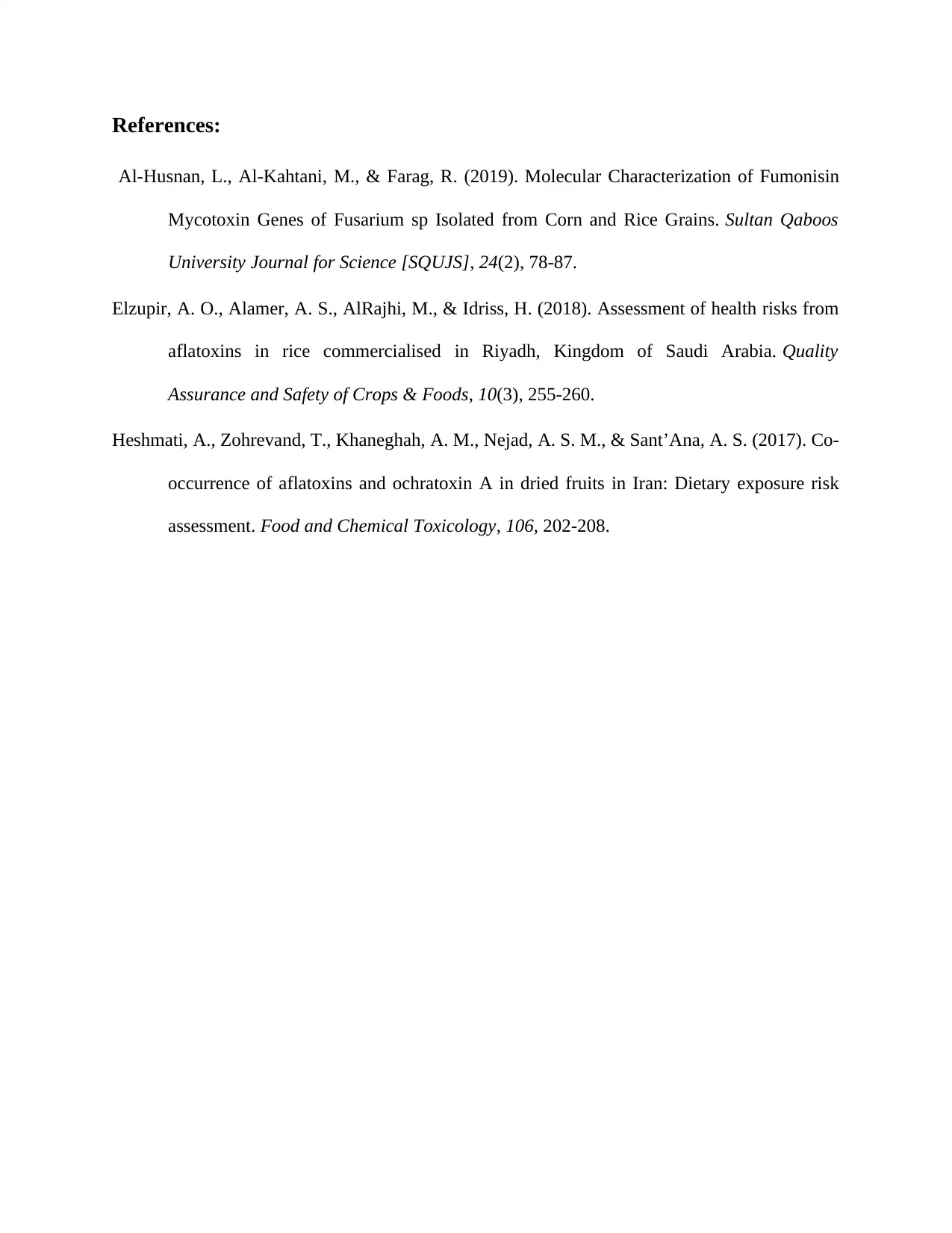Environmental Health: Mycotoxin Risk Assessment in Food Supply Report
VerifiedAdded on 2022/08/20
|4
|691
|15
Report
AI Summary
This report focuses on the risk assessment of mycotoxins in the global food supply, highlighting their prevalence in various food sources like cereals, nuts, and grape juice. It examines the impact of mycotoxins on human and animal health, as well as their presence in the agricultural and poultry industries. The report details common risk identification processes, including what-if analysis and HAZOP studies, alongside the problems associated with mycotoxin contamination. It explores hazard identification through cell and tissue culture assays and SAR models, dose-response evaluation using NOEL and LD50 parameters, and exposure assessment involving characterization, pathway identification, and quantification. The report concludes with risk characterization, comparing the population ADD with the PMTDI of the agent, referencing relevant studies by Al-Husnan, Al-Kahtani and Farag (2019), Elzupir et al. (2018), and Heshmati et al. (2017). This analysis provides a comprehensive overview of the methodologies and considerations involved in assessing the risks posed by mycotoxins in the food supply chain.
1 out of 4






![[object Object]](/_next/static/media/star-bottom.7253800d.svg)